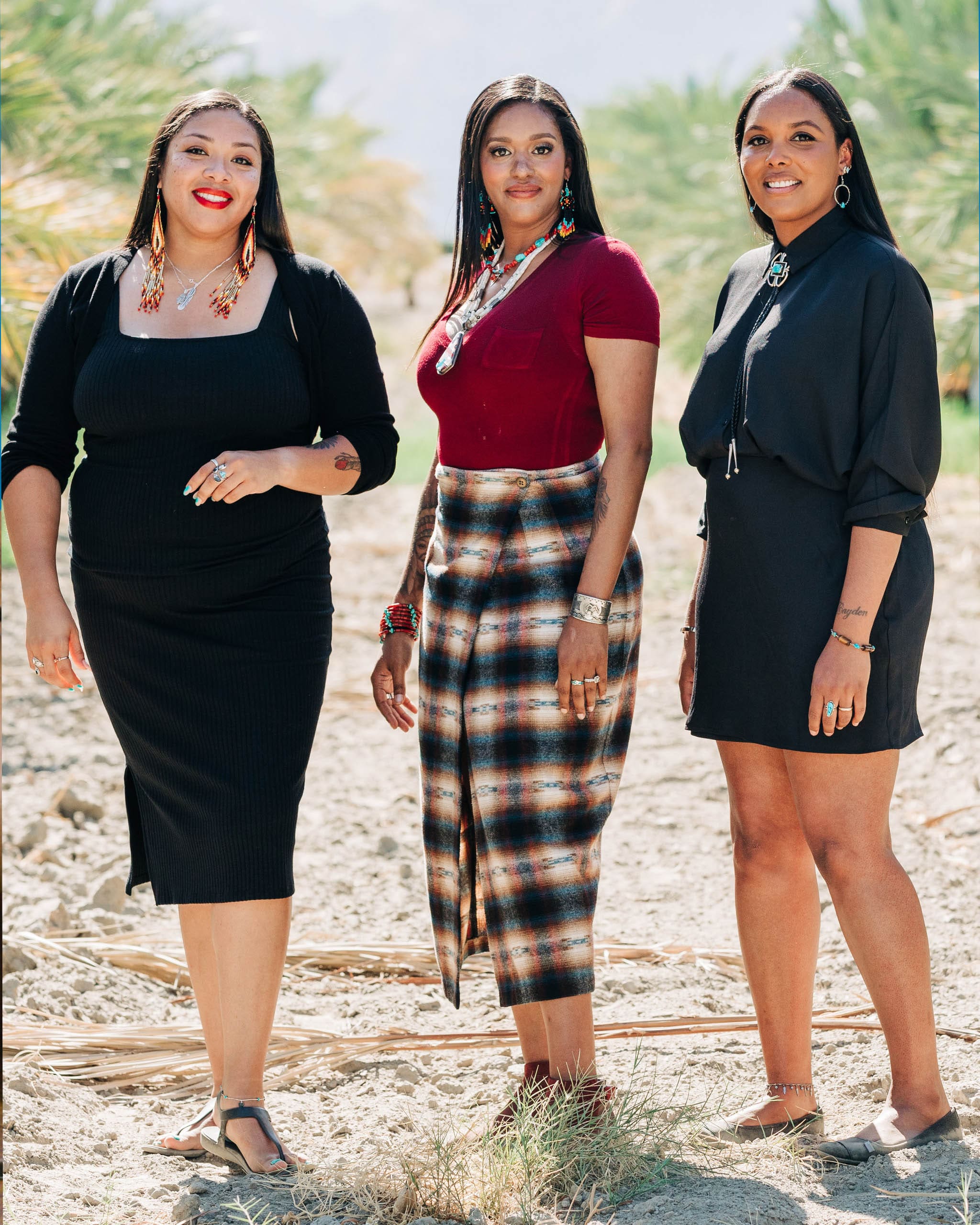Photo: Karthika Gupta
Palm Springs and the Coachella Valley in California are known for many things – rich vibrant arts and music experiences, a creative food scene, one of the largest concentrations of mid-century modern architecture in the world, rejuvenating hot springs, and world-class golf. But perhaps what it should be best known for is its deep-rooted Indigenous culture and history. The region has been the traditional home of the Cahuilla people for more than 3,000 years, who have made their home in the region’s mountains and valleys ever since.
And it’s here, on the very edge of the eastern Coachella Valley, that you will find one of the smallest federally recognised Native American tribes in the United States: the Augustine Band of Cahuilla Indians, who are proving that being small can be just as powerful and impactful when it comes to sustainability and eco-friendly farming.
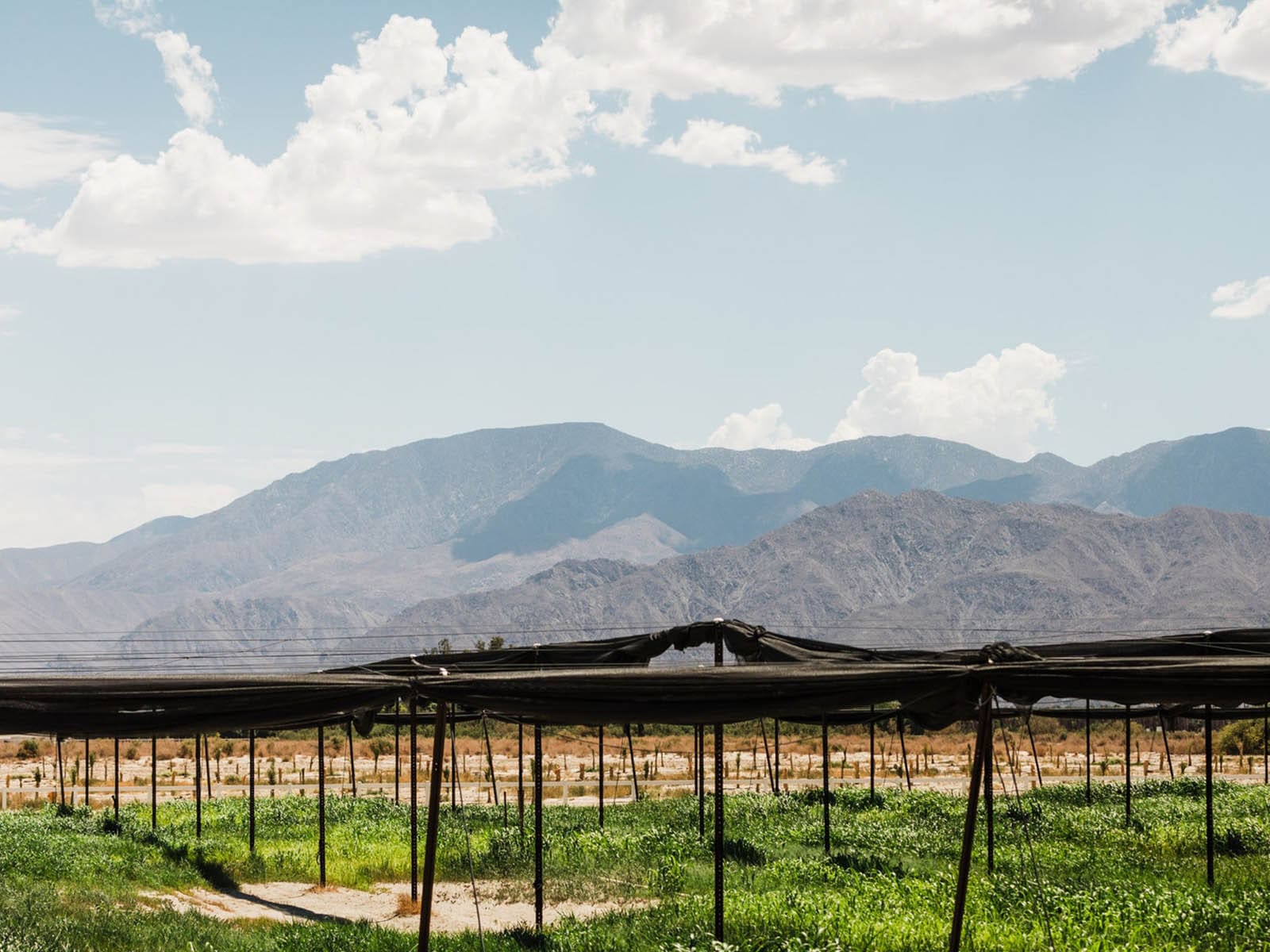
The Augustine nation is a part of Desert Cahuilla and is one of nine Cahuilla Indian nations. Current membership stands at 19 tribal members – seven adults and 12 children – with Congress formally establishing the Augustine Reservation on 29 December, 1891. During many decades of the 1900s, the tribe struggled for its existence due to economic hardships, as well as diseases brought by the Europeans. By 1951, only 11 members remained, and by 1972, Roberta Augustine was the last surviving adult Augustine tribal member.
Today, the tribal council is made up of five direct descendants of Mary Ann, Roberta’s daughter, and her siblings. Amanda Vance is the tribal chairwoman, Victoria Martin is the vice chairperson, William Vance (Amanda’s brother) is the treasurer, Geramy Martin (Victoria’s brother) is the tribal secretary, and Ronnie Vance (Amanda’s sister) is a council member.

Together, they manage all the business holdings of the tribe, which includes the Augustine Casino and Cahuilla Ranch – and perhaps the most impressive of all, Temalpakh Farm, a 53-acre organic estate whose mission is to create a sustainable lifestyle for the residents of Coachella Valley. (Temalpakh is derived from the Cahuilla language, where “temal” means earth and “pakh” means to come from, as a nod to the farm’s purpose of providing nourishment from the earth, for the people.) Being mindful stewards of the land beneath their feet, the farm grows the finest organic produce to supply to the local communities in the area.
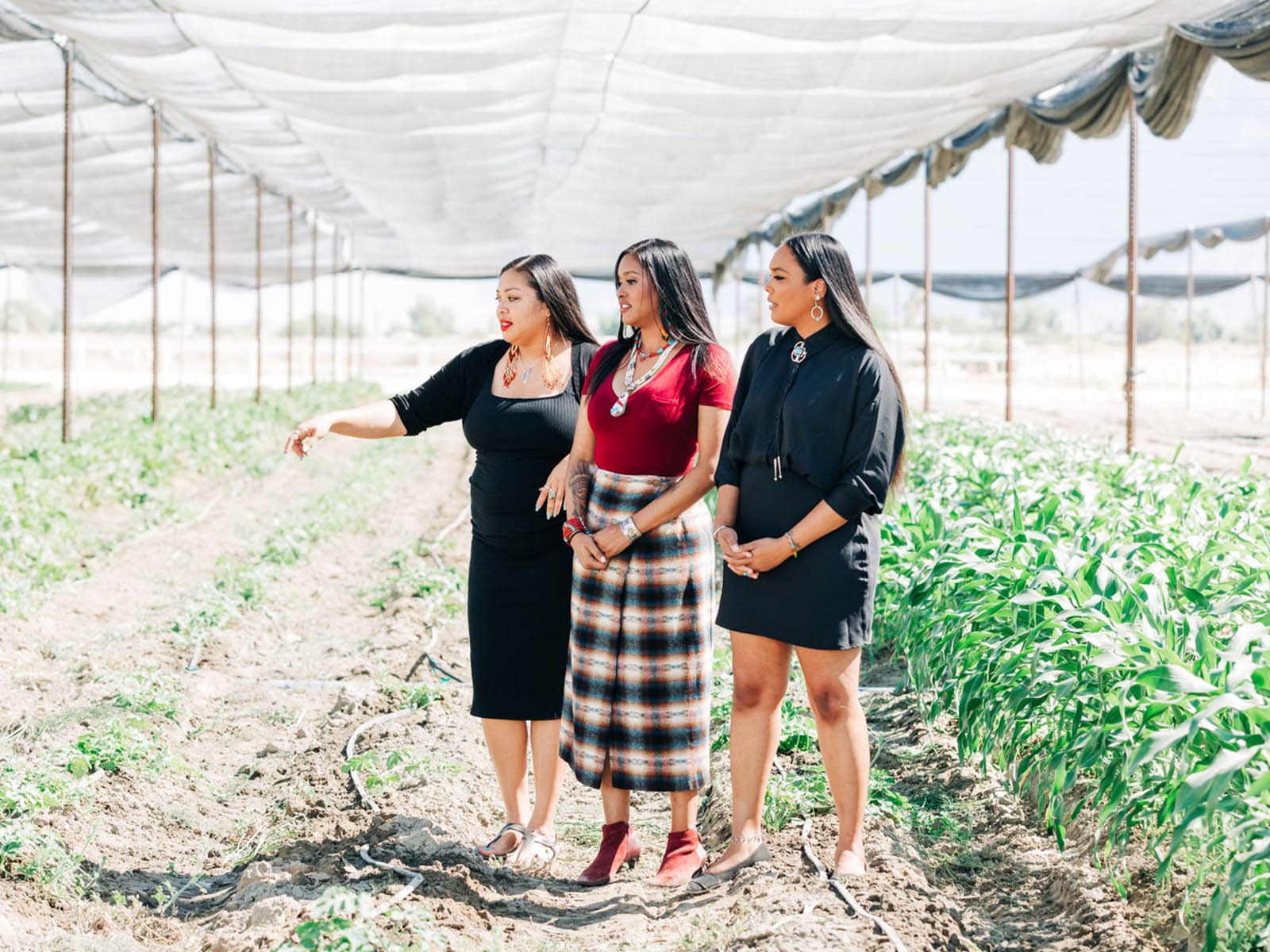
The farm sits right next to Augustine Casino, and the first thing that greets you as you enter is the Seven Features Hill – an elevated circular lookout offering 360-degree views of the farm against the backdrop of the mountains. Seven eight-foot feather sculptures made from recycled tyres by artist Blake McFarland line the lookout, representing seven generations of the past as well as the seven adult tribal members of the present – and honouring the importance of respect and stewardship of the land.
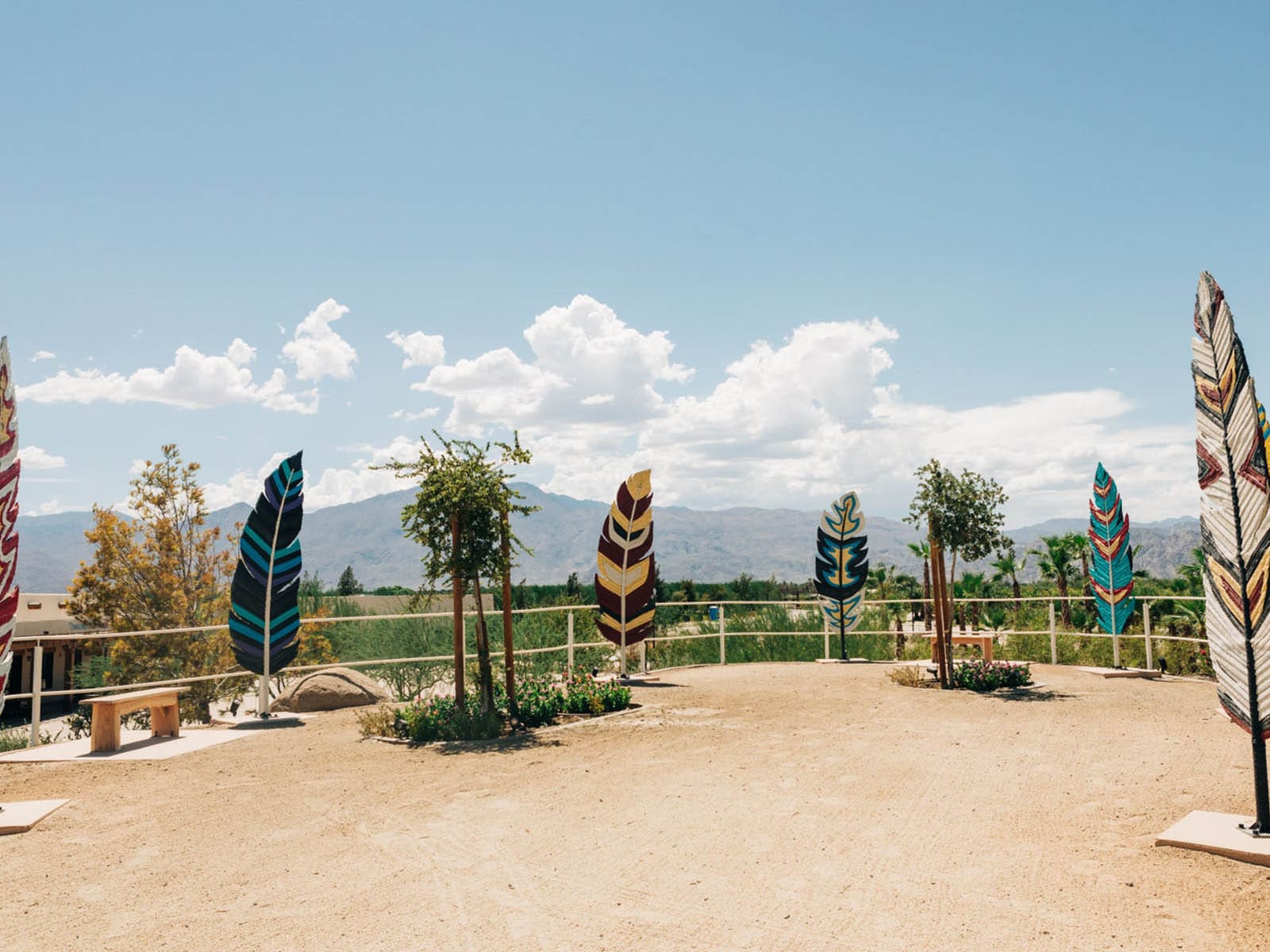
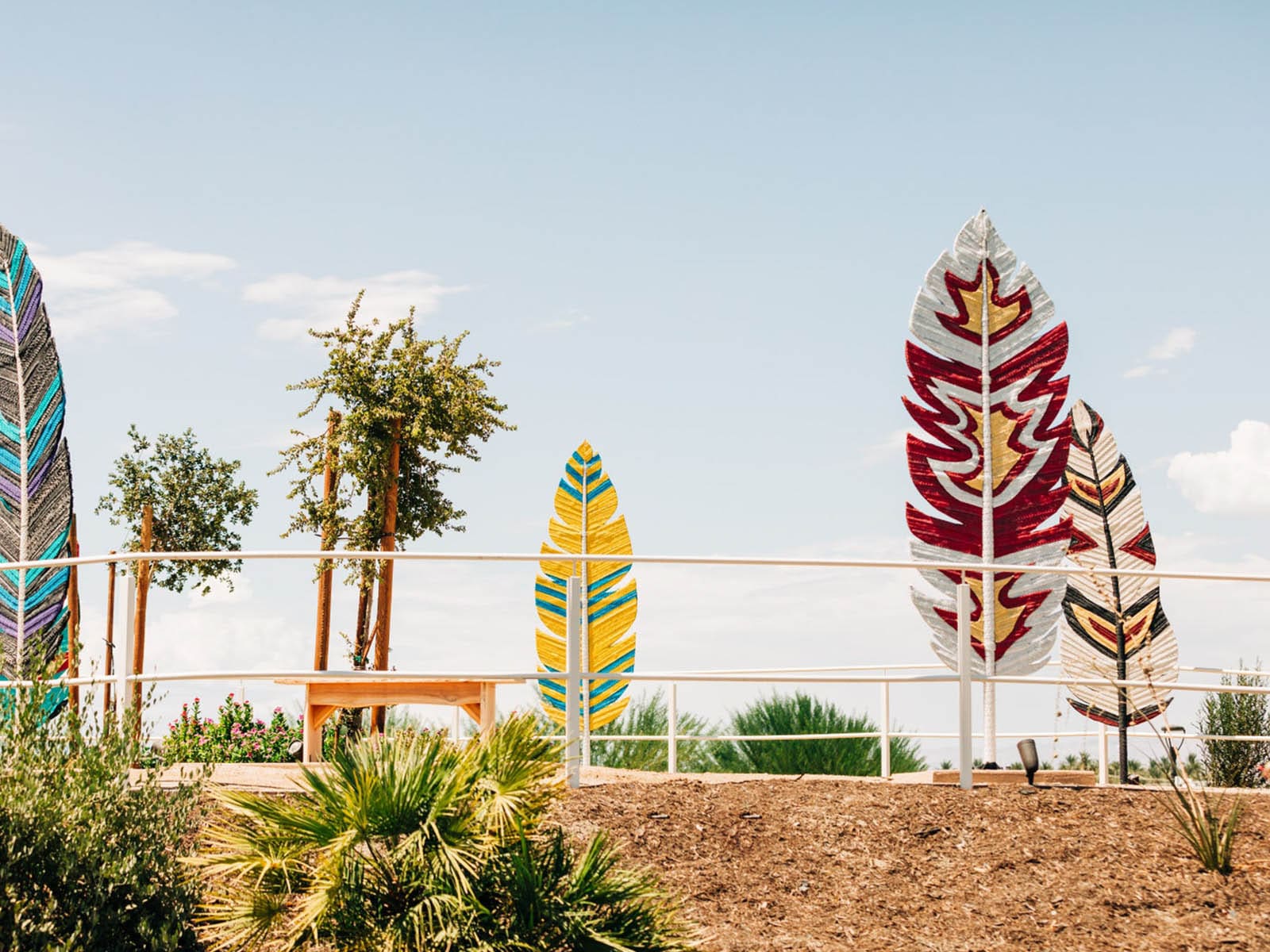
“My mother, Mary Ann, almost single-handedly rebuilt the tribe, transforming its barren 500 acres from a popular site for illegal dumping to an expanding reservation that employs more than 400 people through its various business ventures”, says Chairwoman Amanda. “Unfortunately, the relationship with the government isn’t so stable, and our mother always said that if we want something for ourselves, we have to do it ourselves to have full access to our sovereignty – to maintain, govern, and provide for ourselves.”
This advice has been instrumental in the success of Temalpakh Farms. Various programs and initiatives geared towards self-sustainability and organic farming have been implemented over the years. A solar farm established in 2012 provides power to much of the casino and the farm, minimum tilling maintains soil integrity, and native crop rotation reduces soil stress. Additionally, weather machines and soil-moisture monitors regulate water usage, while a hedge grove minimises wildlife invasion and wind erosion to help sustain a more holistic approach to organic farming. This is particularly important in the desert, where extreme climates make it difficult to be productive all year round.


The tribe also recently implemented a shade structure: a thick layer of netting that sits on iron rods over the crops. This reduces UV exposure and deters birds, which can be a problem in these parts due to the lack of tree habitat in the dry barren landscape. It extends the growing season because the soil is protected from the harsh sun and retains moisture below the surface, increasing productivity. “Now we can keep growing throughout the summer whereas before, we would have had to stop in July and August because of the heat,” explains Vice Chairperson Victoria.
You might wonder how such a small tribe can do so much – and more importantly, why. “There is a movement in our society to be environmentally aware and health conscious. But for our tribe, it’s not just about self-sustainability, it’s about regeneration. We believe that by not hurting the environment and giving back to it, we can make it more beautiful than how we found it,” adds Chairwoman Amanda. “And once people realise what we’re trying to do, they’re fully invested and want to be a part of it because they want to see us give back as much as we can.”

A huge part of the tribal council’s day-to-day life is figuring out what works for them within the confines of the land, resources and labour at their disposal. While such a small farm might seem easy to operate and maintain, Councilwoman Ronnie, who manages the farm, argues that it is harder. “All the farms around us are huge and can do business in bulk while we are trying to buy a couple of pallets of supplies. So that makes it hard to find vendors who are willing to deal with people like us.” But support from the USDA and independent agriculture consultants is helping this small band of visionaries do more and do it well. “When all else fails, Google and a little YouTube go a long way,” she jokes.
Another recent offshoot of the farm is the Temalpakh Market: a farm-to-store concept that services the greater Palm Springs community with fresh fruits and produce. They also support other women-owned, minority or Indigenous businesses by providing a retail outlet to sell goods and services. Kristin Ryall and Mark Gavigan, owners and bakers of Bread and Flours, have been customers of the market since 2021. “The philosophies of Temalpakh Farm mirror our deep concern for the longevity and sustainability of farmland here in the United States,” they say. “And knowing that the produce is locally grown by one farm, picked fresh, and provides local jobs is a bonus.”
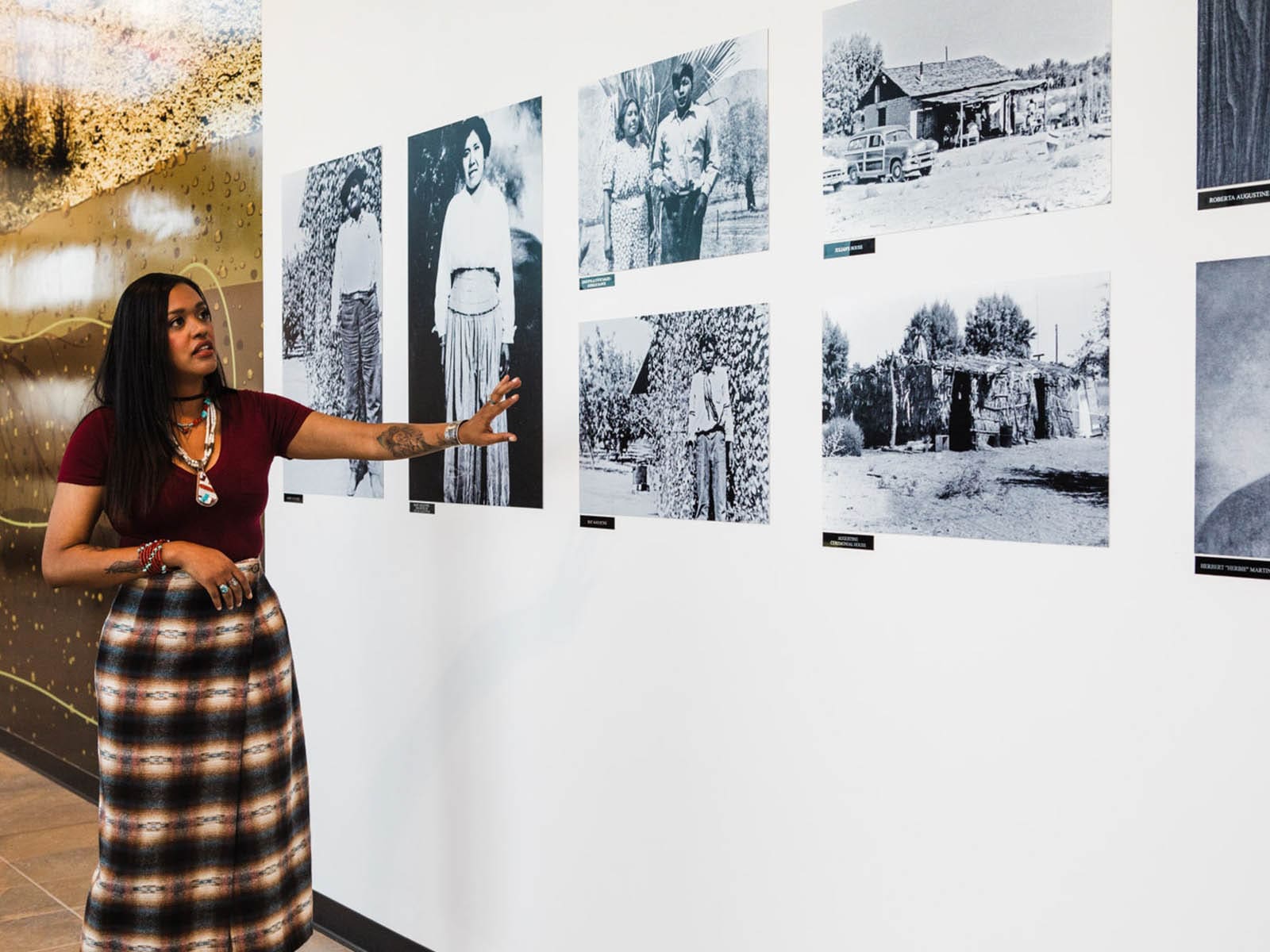

But that’s not all. These five council members are on a mission to take their sustainability efforts a step further in the form of Cahuilla Kish – an off-the-grid housing community for the tribe to live together. “We all grew up in trailer homes on the reservation, which was a hard, tough life. We moved away as soon as possible, but now, we want to be together as a cohesive unit and one big family,” says Chairwoman Amanda. A 78-acre piece of land was added to the reservation and plans include six homes, a community center with a pool, a gym, and an area for all the kids while being eco-friendly and off-grid.
In addition to the lifestyle component, the tribe is also working towards promoting education and understanding of organic farming on Indigenous land. A recent grant of $50,000 (£40,000) from the First Nations Development Institute was used to build an education centre to provide programming for schools around native landscapes, soil management, water conservation, and wildlife in the area. “We encourage field trips to the farm and offer programming for kids to learn firsthand what it means to take care of the land, soil, and environment,” says Vice Chairperson Victoria.
While the work is hard and challenging for this small tribal nation, the mission of being conscious stewards of ancestral indigenous land is what keeps them motivated. Most impressive, perhaps, is that this Cahuilla Indian nation seems to be doing everything right in becoming a “smart city” despite the limited resources and manpower at their disposal, proving that every step towards sustainability matters. Being sustainable isn’t seen as a choice here, but as a necessity. “Our mindset and attitude have always been around building a life within the community we live in,” says Chairperson Amanda. “We have been here for centuries and our intention isn’t to destroy the land but preserve it for ourselves and others around us”.
This article was originally published on British Vogue.
- “Defending Amazonian Communities Is No Longer A Question Of Choice”: Sônia Guajajara On Becoming Brazil’s First Minister For Indigenous Peoples
- The Largest Installation At The 35th São Paulo Bienal Is By Filipino Artist Kidlat Tahimik
- New Old Ways: In Pursuit of the Preservation of Ifugao Culture
- In New York, Indigenous Designer Justin Jacob Louis Makes a Thoughtful Debut
